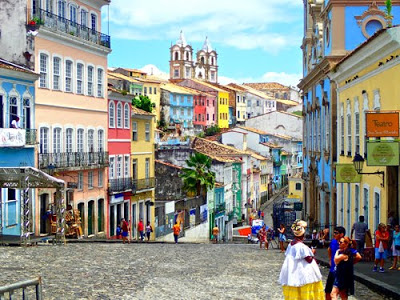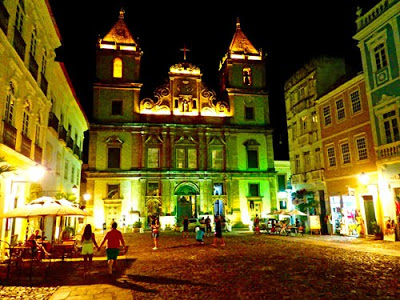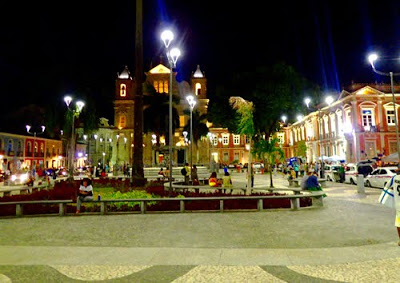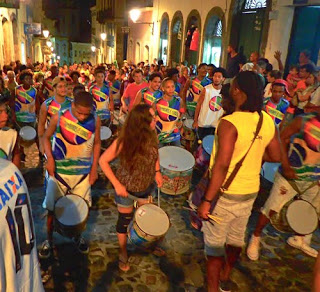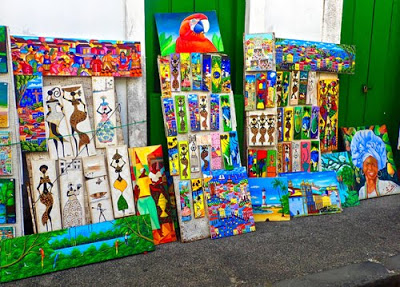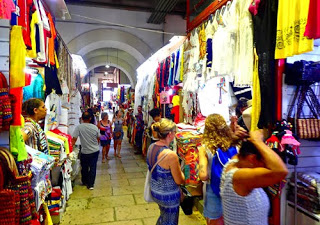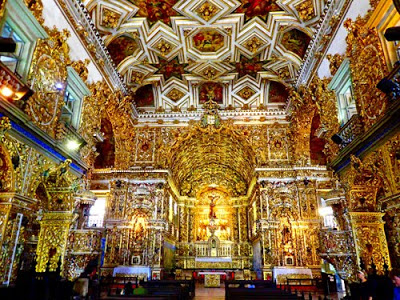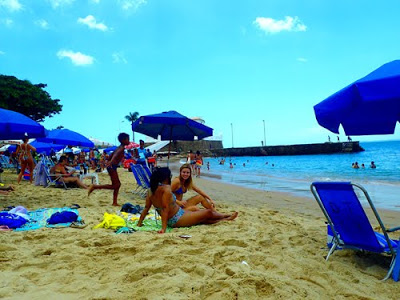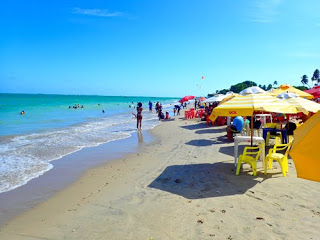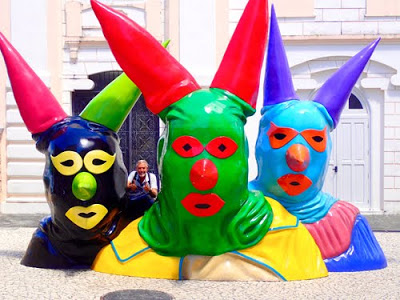Salvador on a cruise: what to do and to see
Visiting Salvador, Brazil’s former colonial capital, is fun and interesting. Nighttime excitement pours from the historic center of this city (the Pelourinho) with the sounds of lively Brazilian music and drum corps overlapping from its squares, restaurants, and street performers. Salvador is Brazil’s third most visited location – behind Rio de Janeiro and Iguacu Falls… for some good reasons!
The Afro-Brazilian Bahia culture in Salvador is heavily influenced from decedents of the large number of slaves brought from western Africa during Portuguese colonial times. This is reflected in the music, food, dance, entertainment, art, folklore, religion, and most importantly, the people. Unlike what happened in other slave territories around the world, due the very large numbers of slaves imported, they were able to maintain much of their culture. Salvador today offers a unique tourist experience to experience this Afro-Brazilian mix of European and African cultures.
PelourinhoArchitecture
FranciscoChurchatNightSalvadoX
MainSquareSalvado
Salvador is one of the oldest cities founded by Europeans in the Americas and was Brazil’s Portuguese colonial capital for three centuries. A huge amount of gold, sugar, and tobacco was brought through it and Salvador became very wealthy. It is now a living museum of 17th and 18th-century architecture. Recovering from urban decline that affected many colonial cities in South America, repairs and interesting tourist attractions have been underway everywhere – Salvador is ready for visitors!
Salvador’s main square in the Pelourinho, Terreiro de Jesus, is surrounded by bars and sometimes has performers during the day. Taxis can be found here. It leads into our favorite nighttime square, Largo do Cruzeiro de Sao Francisco that has restaurants where you can sit outside and enjoy music with the beautifully lighted Sao Francisco church (see photo). You should try a unique Bahia dish such as Moqueca, a rich fish stew (see photo below).Salvador’s cobblestoned central old town, Pelourinho, is the place to be. It is a UNESCO World Heritage site and music is everywhere, especially Tuesday nights and on weekends. This area is not large so wandering around is easy and fun. People watching is great here. Be careful in crowds because pickpockets do operate in Salvador. Police provide good security to keep this area safe – wandering too far outside is not recommended, especially at night.
DrumCorps
OutdoorRestaurants
StreetScene
Three of Salvador’s squares have been set up with stages offering music shows many days. Largo Pedro Arcanjo and Largo Tereza Batista are accessed from the streets Gregorio De Matos and Largo Quincas Berro D’Agua from Rua V.C. Rarelo. The shows are often free or have small cover charges (unless a big name band comes in). You can stand and dance or sit at a table enjoying a drink or meal at several restaurants.
Religion was a big part of colonial life and it is said this Bahia region of Brazil has so many churches that you could visit a different one every day of the year. Quite a number are located in Salvador. You should plan a visit to Sao Francisco Church showcasing Portugal’s colonial wealth in Salvador Brazil (see photo). Finished in 1723, it is possibly one of the most ornately ornamented churches in the world with its almost ton of gold decorations covering the inside – amazing!
61d4a3e5-0e1f-402a-badc-040d47da0581
bahiaArtwork
Mercado
Sao Francisco Church
The hour-long cultural show Bale Folclorico da Bahia is an interesting experience in Salvador showcasing unique Bahian music and dance. The show starts out slow with African-based song and dance reflecting mythology – the African ‘gods’ of the Candomble religion still practiced by many in Bahia. This leads up to an exciting display of lively Samba and Capoeira, the martial arts form of dancing practiced by slaves to stay fit and prepare for possible uprising from their masters. The show ends with an uplifting samba dance that was done by slaves.Salvador’s Afro-Brazilian carnival is a huge party attracting up to 2 million visitors. Interested in the history of carnival in Brazil? Do plan a visit to Salvador’s Museu do Carnaval (see photo). The history and excitement of this amazingly exciting experience is captured well with video displays showcasing the music, history, and crowds that are uniquely Brazil. We found ourselves dancing while watching. This museum is located behind the Cathedral Basilica off Praca da Se.
BarraBeach
MarGrande
Museu do Carnaval
For less crowded beach experience, we enjoyed the 40-minute ferry ride to Mar Grande on the island of Itaparica. The beach there has three restaurants where you can sit right on the beach with your feet in the sand and enjoy drinks, food, music, and take a dip in the ocean to cool off (see photo). The ferry is located in lower city near Salvador’s Mercado Modelo accessed by the Elevador Lacerda. Praia do Forte is a very nice beach located about 1 ½ hours drive from Salvador.Salvador also offers some fun beach experiences.
Praia Porto da Barra (close town beach) is nice (see photo). You can rent chairs and an umbrella for about $5 and nice affordable drinks and food are available right on the beach. It is very popular (crowded) on the weekends. Barra is a short taxi ride from Pelourinho. Fans of nautical history, don’t miss the well-done Museu Nautico da Bahia here. The new large shopping center, Shopping Barra, is located here with upscale fashions and restaurants – nice place! Try the tasty cheese (Queijo Assado) they roast on the beach. Sipping a caipirinha is a thing to do in Brazil and can be done in many favors.
Follow Cruising Journal for information and advice on Salvador and all cruise ship reviews and opinions.

